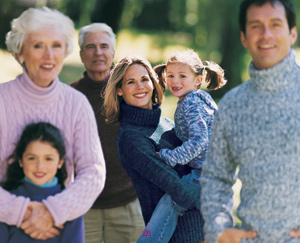The practical outcome is that health is an expression of many factors, not merely one kind of activity. A person who has an extraordinarily healthy diet but has very high levels of stress may still suffer from cardiovascular disease, regardless of the amounts of omega-3 fatty acids and fresh fruits and vegetables he consumes.1 A person may be a champion athlete, such as a ballet dancer or a figure skater, and yet have type 2 diabetes owing to a lifetime of unhealthy nutrition.2
There are many such cautionary tales, including that of a famous runner, author, and fitness expert who died suddenly of a heart attack at the age of 52.
Like an archeological dig, good health has many layers. It's always a mistake to stop digging (even though you think you completely understand a process), because a little more effort and a little more thought will reveal new patterns and new connections. This is the major problem with medications. You take a drug to stimulate one thing or inhibit another thing, but there always more layers to consider. Side effects result from trying to manipulate one layer of effects while ignoring the consequences to other important layers.
Statins are a good example of this process of failing to consider the layers of health. These drugs lower blood cholesterol levels by inhibiting the production of a liver enzyme that is part of the pathway of cholesterol synthesis. But statins have many side effects, including Lou Gehrig's disease, memory loss, liver damage, nausea, diarrhea, and muscle pain.3
In contrast, chiropractic care is designed to pay attention to all the layers. Chiropractic care, in fact, is a layer-optimization process. By restoring full functioning of a person's nerve system and improving the mechanical functioning of the musculoskeletal system, chiropractic care enables the body's layers of health to interact in the way they were designed to interact. Chiropractic care is a natural, efficient method of restoring and maintaining good health.
Click to Read More
1Knoepfli-Lenzin C, et al: Effects of a 12-week intervention period with football and running for habitually active men with mild hypertension. Scand J Med Sci Sports Feb 2, 2010 (Epub)
2Fuemmeler BF, et al: Weight, dietary behavior, and physical activity in childhood and adolescence. Implications for adult cancer risk. Obes Facts 2(3):179-186, 2009
3Sharma M, et al: Systematic review: comparative effectiveness and harms of combination therapy and monotherapy for dyslipidemia. Ann Intern Med 151(9):622-630, 2009
Back To Health Wellness Center
Daniel Lonquist, DC, CCST, CCWP
970-257-9199




